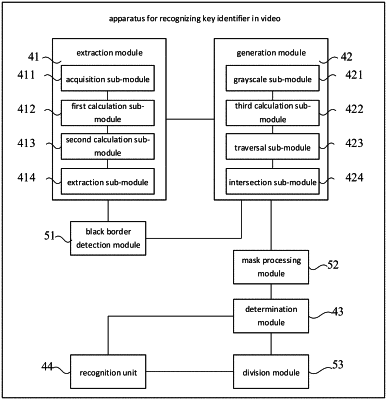| CPC G06V 20/46 (2022.01) [G06F 18/214 (2023.01); G06V 20/635 (2022.01)] | 15 Claims |

|
1. A method for recognizing a key identifier in a video, comprising:
extracting a plurality of key frames from the video;
generating a mask of the key identifier by using a difference between the plurality of key frames;
determining, in video frames of the video, a key identifier area image by using the mask; and
recognizing the key identifier area image to obtain a key identifier category comprised in the video,
wherein the extracting the plurality of key frames from the video, comprises:
extracting a key frame of a scene change in the video according to a difference between adjacent frames in the video, and
wherein the extracting the key frame of the scene change in the video according to the difference between adjacent frames in the video, comprises:
acquiring three consecutive frames including a current frame from the video;
calculating mean absolute differences between pixels of every two adjacent frames in the three consecutive frames to obtain a first mean absolute difference and a second mean absolute difference;
calculating a first difference value between the first mean absolute difference and the second mean absolute difference; and
extracting the current frame among the three consecutive frames as the key frame, in a case that a minimum value of the first mean absolute difference, the second mean absolute difference, and the first difference value is greater than a first threshold.
|